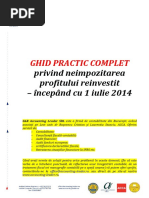Nov 20, 2017. Cmterm-7941-7961-sccp.8-0-3.zip 1 >>> FirstGenFirebird eStore.Firmware Versions 8.3(5) for Cisco IP Phone Models 7941G and.cmterm 7911 7906 sip 8 3 5 zip 7941G SCCP to SIP upgrade failure.RAW Paste Data which version of CUCME contains firmware 8.5.2.
Danny Gatton Licks And Tricks Pdf To Excellent
Chops: IntermediateTheory: BeginnerLesson Overview:. Learn how to play double-stop phrases in the style of Brent Mason and Johnny Hiland. Improve your hybrid picking. Create longer phrases that move through different positions using the CAGED system.One of the greatest things about the guitar is that unlike the saxophone, flute, or oboe, we play a truly polyphonic instrument. This means that we’re able to play single-note phrases (monophonic) and chords.

Sadly, this is a feature that’s often underutilized by our kin, and that’s a true shame. Now while these licks may have a strong country vibe, the concept isn’t just for hoedowns and barn dances. Double-stops and chords can be used in any musical context—guitarists as diverse as Brian Setzer and Kirk Hammett embrace them—but it’s important to know which sounds work and which don’t.If you’ve read my previous lessons, you’ll know I’m a big advocate of the CAGED system, so expect these licks to fit easily into those chord forms. For those unfamiliar with this approach, each of these licks will fit neatly around basic positions of bigger chords that you probably know in barre form.
This really allows us to play licks all over the fretboard because if you can picture the chord, you can play the licks. Check out if you need a refresher.Our first example ( Ex. 1) fits around an A7 chord using the “E” shape. When using the CAGED system, pay attention to how the lick fits within the chord shape—that’s an essential concept. It begins with a half-step slide into the chord before descending down an A7 arpeggio. The next little double-stop could be considered part of a D triad (creating a D/A sound). However, it’s actually a lot better to think of it as two notes from the A Mixolydian scale (A–B–C#–D–E–F#–G).

As with all the double-stops in this lesson, it helps to use hybrid picking. In the audio examples I’m using my middle and ring fingers in addition to my pick.Our next lick in Ex. 2 features a position shift and is a great way to get from an open A chord to the 5th position. After starting with a typical boogie rhythm pattern, the phrase moves up the neck via some diatonic thirds. Riffs like this are very common in the country idiom, and you’ll hear them on everything from Alan Jackson to the Dixie Chicks.We’re stepping it up a little in Ex.
3 with the introduction of a triplet to kick things off. We shift positions again, but this time it’s from the 5th position down to the open position. You’ll notice a bit of chromaticism leading into beat 3 of the first measure before it resolves to an open A chord.Ex. 4 begins with a similar triplet idea, but this time it moves from an open A chord back up to the 5th position.
It’s worth noting that the second double-stop in the first measure isn’t made up of thirds like most of the others. It’s simply the 3 and b7 from an A7 chord. Aside from sounding a lot like Brent Mason, it adds a touch of heart to what we’re doing. If you limit all your double-stops to one interval, it will start to sound very boring.There are plenty of position shifts in Ex. 5 as it moves from the 12th fret all the way down to the open position. It starts with a slide into an A7 idea (using the “C” shape) before shifting down two frets and repeating a similar phrase.
Next up is a riff that snakes through the A blues scale (A–C–D–Eb–E–G) before moving down to the open position via a hot single-note line. This actually works great when played as a 16th-note passage and is the sort of thing you’d expect from country-shredder Johnny Hiland.Ex. 6 features Brent Mason’s favorite triplet again. This time it moves up the neck from the 5th to the 9th position. The real trick here is in the final measure. The double-stop has a 3 on the bottom, but instead of hitting the root it goes to the b7—a very cool diminished triad substitution I picked up from Scotty Anderson.Ex.
7 stays almost entirely in the 12th position. Heading into the last measure, check out how the bottom note descends chromatically while the top note remains the same. It finishes with a little bluesy phrase—perfect for those soulful moments.Our final lick ( Ex. 8) is tricky. It moves up the neck with a combination of chicken pickin’ and double-stops before resolving to a sneaky double-stop lick that would sit nicely in the lick bag of Danny Gatton.

Harley davidson engine sound clips. The key here is to see the underlying chord shapes so you have references to keep you from getting lost in the position-shifting mayhem.I’m certain you’ll get something from these, just try them in as many settings as you can and experiment with swing feels—many of these licks sound even better when swung—and in double time. It’s all about experimentation and finding a way to adapt the ideas to your own playing.